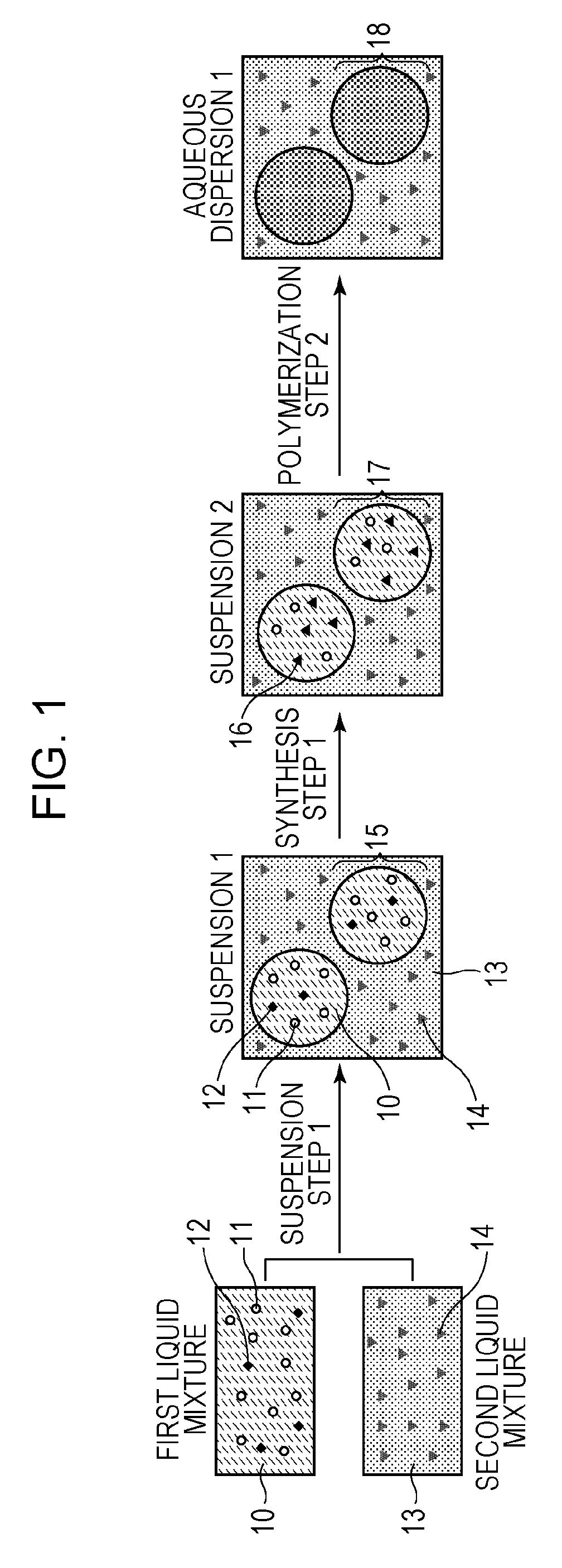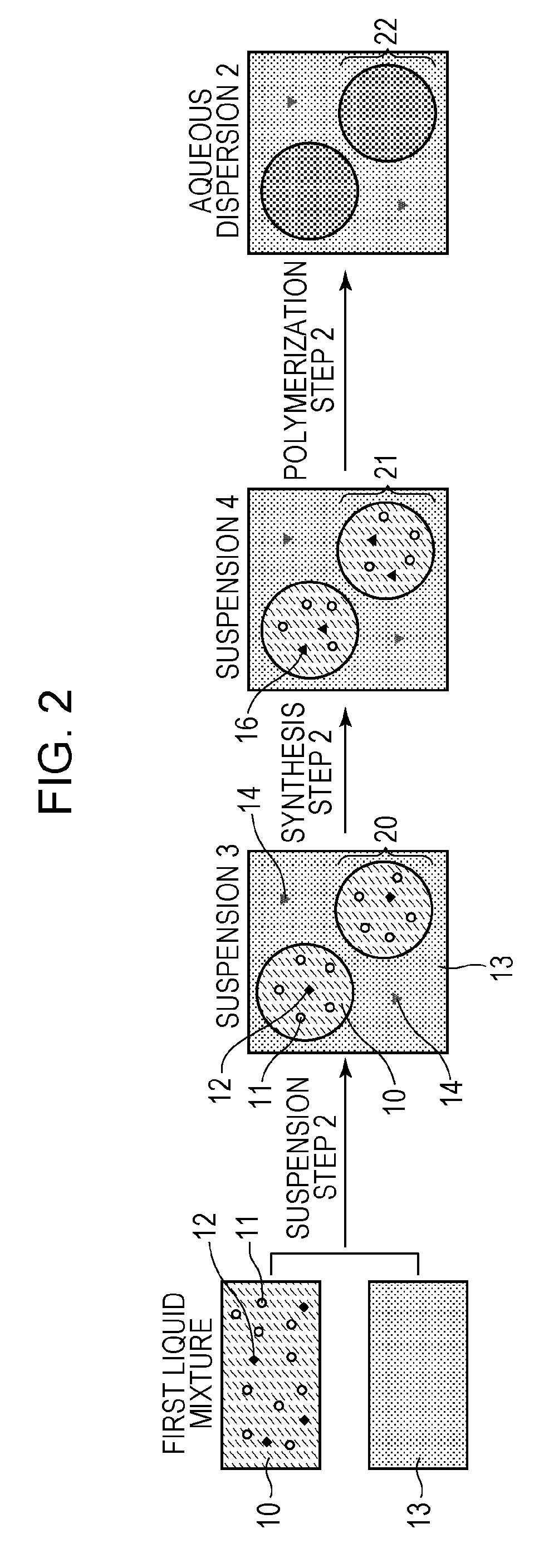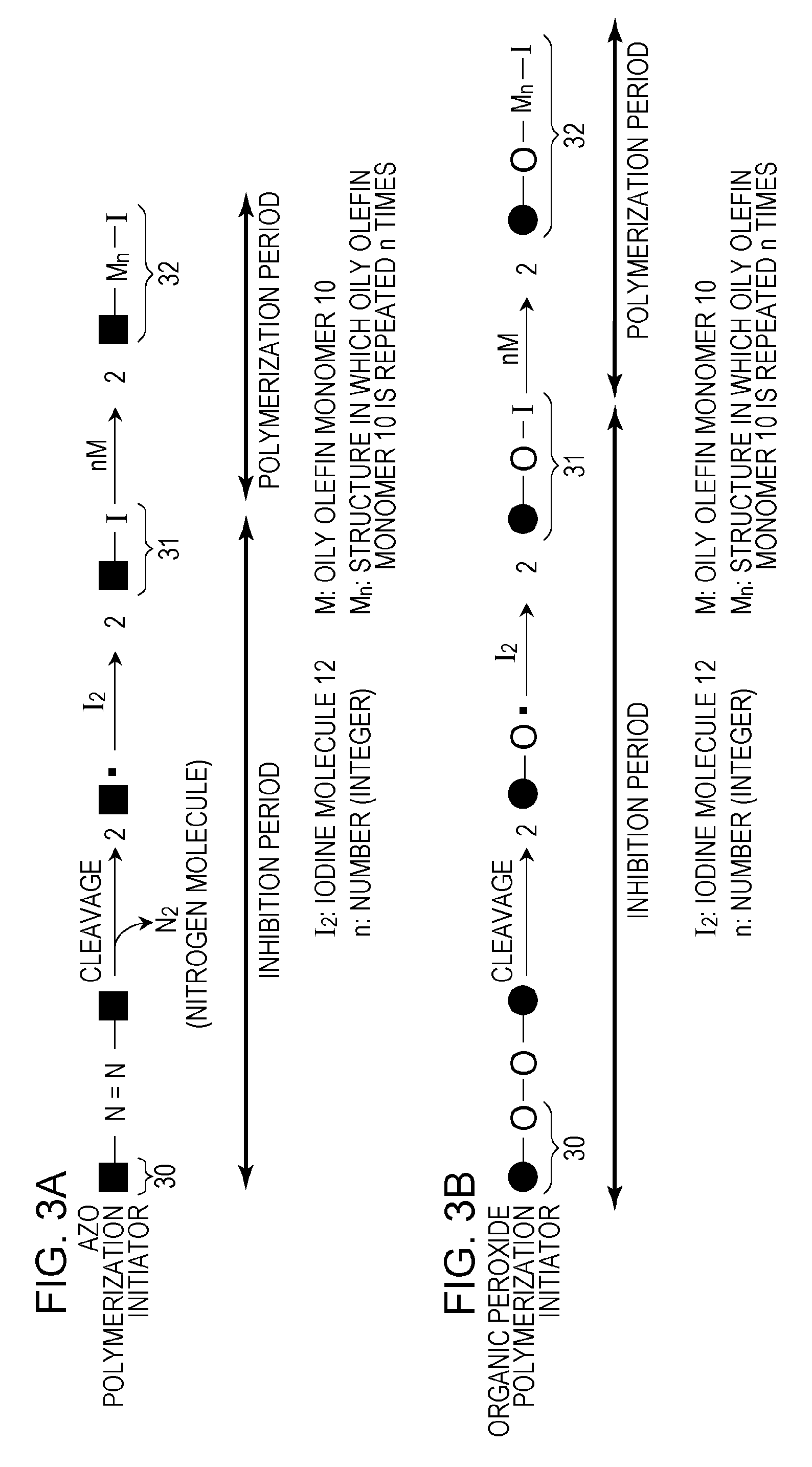Method for producing polymer particles
a polymer and particle technology, applied in the field of polymer particle production, can solve the problems of difficulty in industrially using many of such living radical polymerization methods, cost and safety, and achieve the effect of satisfactory molecular weight controllability and satisfactory polymerization conversion ra
- Summary
- Abstract
- Description
- Claims
- Application Information
AI Technical Summary
Benefits of technology
Problems solved by technology
Method used
Image
Examples
example 1
Suspension Step
[0071]In a 100-mL glass container, 8.4 mmol of 2,2′-azobis-(2,4-dimethylvaleronitrile) (V-65; manufactured by Wako Pure Chemical Industries, Ltd., azo radical polymerization initiator, 10-hour half-life temperature: 51° C.), 2.8 mmol of iodine molecules, and 0.54 mol of styrene were uniformly mixed. A dark red first liquid mixture was then obtained. Meanwhile, 2.2 g of tricalcium phosphate (inorganic dispersant) was added to 200 g of ion-exchange water, and the mixture was stirred at 15,000 rpm for 30 minutes to prepare a dispersion at 30° C. Subsequently, 0.02 mol of potassium iodide was dissolved in the dispersion to prepare a second liquid mixture (pH 8 to 9). The content of iodide ion in the second liquid mixture was 1×10−1 mol / L in terms of the amount of potassium iodide.
[0072]Next, the first liquid mixture was poured into the second liquid mixture in a nitrogen atmosphere at one time. The mixture was stirred at 15,000 rpm for 10 minutes in a nitrogen atmosphere,...
example 2
[0075]Polymer particles were obtained as in Example 1 except that 0.54 mol of styrene in Example 1 was changed to 0.56 mol of methyl methacrylate. A suspension after six hours from the start of heating in the polymerization step was sampled, and the particle diameter, the polymerization conversion rate, the peak molecular weight (Mp, suspension) and the molecular-weight distribution (Mw / Mn) of the resulting polymer particles were measured. The molecular-weight controllability was evaluated by a comparison with the peak molecular weight (Mp, bulk) in Reference Example 2. The results are summarized in Table 1.
example 3
[0076]Polymer particles were obtained as in Example 1 except that 0.54 mol of styrene in Example 1 was changed to 0.43 mol of styrene and 0.11 mol of methyl methacrylate. A suspension after seven hours from the start of heating in the polymerization step was sampled, and the particle diameter, the polymerization conversion rate, the peak molecular weight (Mp, suspension), and the molecular-weight distribution (Mw / Mn) of the resulting polymer particles were measured. The molecular-weight controllability was evaluated by a comparison with the peak molecular weight (Mp, bulk) in Reference Example 3. The results are summarized in Table 1.
PUM
| Property | Measurement | Unit |
|---|---|---|
| molecular weight | aaaaa | aaaaa |
| molecular-weight | aaaaa | aaaaa |
| molecular-weight controllability | aaaaa | aaaaa |
Abstract
Description
Claims
Application Information
 Login to View More
Login to View More - R&D
- Intellectual Property
- Life Sciences
- Materials
- Tech Scout
- Unparalleled Data Quality
- Higher Quality Content
- 60% Fewer Hallucinations
Browse by: Latest US Patents, China's latest patents, Technical Efficacy Thesaurus, Application Domain, Technology Topic, Popular Technical Reports.
© 2025 PatSnap. All rights reserved.Legal|Privacy policy|Modern Slavery Act Transparency Statement|Sitemap|About US| Contact US: help@patsnap.com



